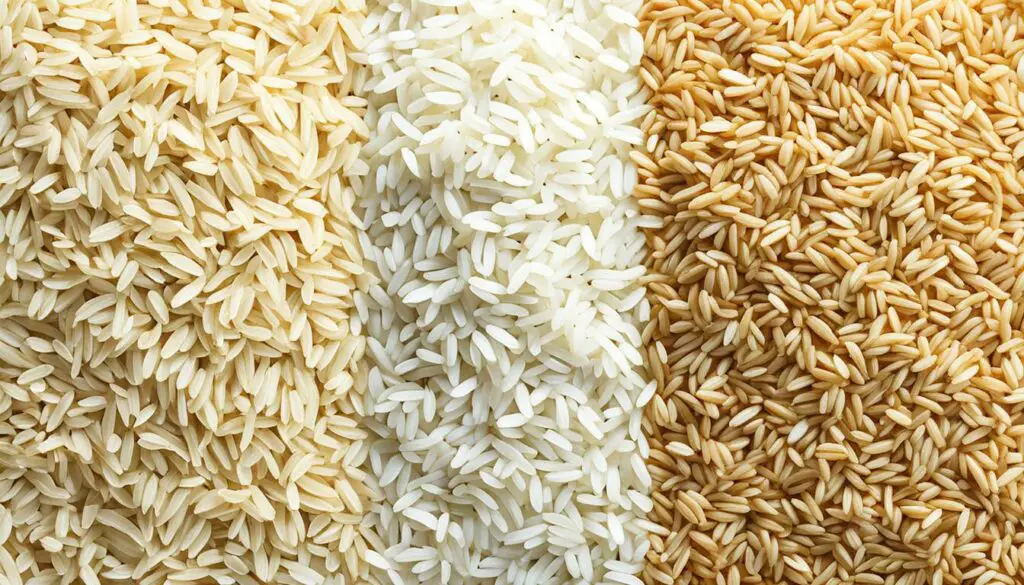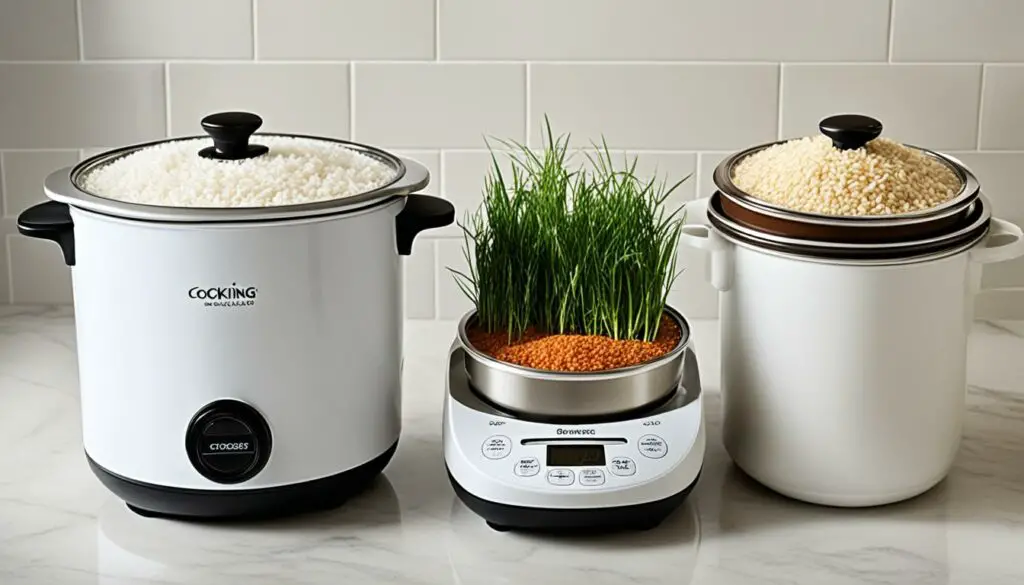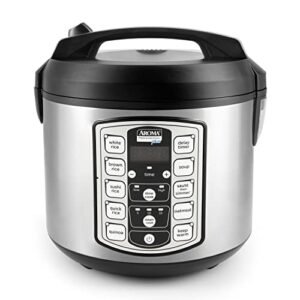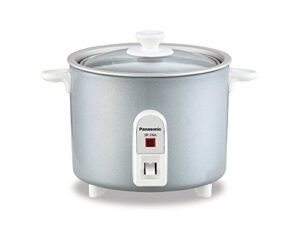Did you know that the choice between white and brown rice can have a significant impact on your health? It’s true! These two popular types of rice differ not only in appearance but also in their nutritional composition and health benefits. In this article, we will explore the key health differences between white and brown rice, helping you make informed dietary choices for a healthier lifestyle.
Table of Contents
ToggleUnveiling the Grain: Understanding Rice Varieties
To fully appreciate the health benefits and culinary potential of rice, it is important to understand the different varieties available. This section will provide an in-depth look at the world of rice, from white to brown, exploring their production, characteristics, and culinary uses.
What is White Rice and How is it Produced?
White rice is the most commonly consumed type of rice worldwide. It is produced by removing the outer layers of the rice grain, including the bran and germ, through a process called milling. This results in a refined grain with a smooth, white appearance. The removal of the outer layers also removes some of the nutritional components, such as fiber and certain vitamins and minerals.
To produce white rice, the following steps are typically involved:
- Harvesting: Rice plants are harvested once the grains have matured.
- Threshing: The grains are separated from the rest of the plant through threshing, which involves beating or shaking the plants.
- Hulling: The outer husk or hull is removed from the grains.
- Milling: The grains undergo milling, where the bran and germ layers are mechanically removed, leaving behind the polished white rice.
Identifying Brown Rice and Its Whole Grain Profile
Brown rice, on the other hand, is the whole grain form of rice. It retains the bran and germ layers, making it a more nutritious option compared to white rice. Brown rice has a chewier texture and nuttier flavor.
The production process of brown rice differs from that of white rice in that it skips the milling step. Here’s an overview of how brown rice is produced:
- Harvesting: Just like white rice, brown rice is harvested when the grains are fully matured.
- Threshing: The grains are separated from the rest of the plant through threshing.
- Hulling: The outer husk or hull is removed from the grains, similar to white rice.
- Minimal milling: Brown rice undergoes minimal milling, where only the outermost layer, the hull, is removed. This results in a grain that retains the bran and germ layers.
White Rice Varieties and Their Culinary Uses
There are various white rice varieties, each with its own unique qualities and culinary uses. Some popular white rice varieties include:
| Variety | Description | Culinary Uses |
|---|---|---|
| Basmati | A long-grain rice known for its fragrant aroma and fluffy texture. | Often used in Indian and Middle Eastern dishes, such as biryani and pilaf. |
| Jasmine | A fragrant rice variety with a slightly sticky texture. | Commonly used in Thai and Southeast Asian cuisine, including stir-fries and coconut rice. |
| Arborio | A short-grain rice known for its high starch content and creamy texture. | Primarily used in Italian dishes, particularly risotto. |
Brown Rice Varieties and Their Nutritional Edge
Similar to white rice, there are different varieties of brown rice, each with its own nutritional advantages. Some popular brown rice varieties include:
| Variety | Description | Nutritional Profile |
|---|---|---|
| Short Grain Brown Rice | A chewy and slightly sticky variety with a rich, nutty flavor. | High in fiber, vitamins, minerals, and antioxidants. |
| Long Grain Brown Rice | A versatile variety with a lighter texture and nutty taste. | Rich in fiber, manganese, and selenium. |
| Black Rice | A strikingly colored rice with a slightly sweet flavor and chewy texture. | Contains anthocyanins, which are antioxidant compounds responsible for its vibrant hue. |
Differences Between White and Brown Rice
In this section, we will explore the key differences between white and brown rice. Understanding these differences will help you make informed decisions about which type of rice to incorporate into your diet.
The Milling Process: Nutrition Stripped?
The milling process plays a significant role in the differences between white and brown rice. White rice undergoes extensive milling, which removes the outer bran and germ layers, resulting in a polished appearance. Unfortunately, this milling process also eliminates a substantial portion of the rice’s nutritional value.
Fiber Content and Digestive Impact
One of the most significant distinctions between white and brown rice is their fiber content. Brown rice retains its bran and germ layers, making it a whole grain. As a result, it is high in dietary fiber. On the other hand, the milling process removes these fibrous layers from white rice, significantly reducing its fiber content.
Fiber is crucial for digestive health as it adds bulk to the stool and helps regulate bowel movements. Consuming fiber-rich brown rice can promote a healthy digestive system and reduce the risk of constipation.
Vitamin and Mineral Composition
The vitamin and mineral content of white and brown rice also differ due to the milling process. Brown rice contains higher levels of vitamins and minerals compared to white rice. This is because the bran and germ layers, which are rich in these micronutrients, are preserved in brown rice.
Some key vitamins and minerals found in brown rice include:
- Magnesium: Essential for bone health and energy production.
- Phosphorus: Important for strong bones and teeth.
- Vitamin B6: Supports brain function and the production of red blood cells.
- Iron: Necessary for oxygen transport in the body.
While white rice also contains certain vitamins and minerals, the levels are significantly lower due to the removal of the bran and germ layers during the milling process.
| Nutrient | White Rice | Brown Rice |
|---|---|---|
| Fiber (g) | 0.6 | 3.5 |
| Magnesium (mg) | 19 | 43 |
| Phosphorus (mg) | 68 | 162 |
| Vitamin B6 (mg) | 0.1 | 0.2 |
| Iron (mg) | 0.8 | 0.8 |
Table: Nutritional Comparison of White and Brown Rice (per 100g)
As shown in the table above, brown rice outperforms white rice in terms of fiber, magnesium, phosphorus, and vitamin B6 content. However, both types of rice provide a similar amount of iron.
Nutritional Comparison of White and Brown Rice
In order to make informed dietary choices, it’s important to understand the nutritional differences between white rice and brown rice. This section will provide a detailed comparison of their macronutrient and micronutrient content.
Macronutrient Content:
- Carbohydrates: White rice and brown rice have similar carbohydrate content, with around 45 grams per serving.
- Protein: Brown rice contains slightly more protein than white rice, providing around 5 grams per serving compared to 4 grams in white rice.
- Fat: Both white rice and brown rice are low in fat, with less than 1 gram per serving.
Micronutrient Composition:
In terms of micronutrients, brown rice generally provides higher levels of vitamins and minerals compared to white rice. This is because the refining process involved in producing white rice removes the bran and germ, which are rich in nutrients.
| Nutrient | White Rice | Brown Rice |
|---|---|---|
| Vitamin B1 (Thiamine) | Low | High |
| Vitamin B3 (Niacin) | Low | High |
| Vitamin B6 | Low | High |
| Iron | Low | Moderate |
| Magnesium | Low | Moderate |
| Zinc | Low | Moderate |

As shown in the table above, brown rice contains higher levels of key vitamins and minerals, including vitamin B1, vitamin B3, vitamin B6, iron, magnesium, and zinc. These nutrients play crucial roles in various bodily functions, such as energy metabolism, immune system health, and overall well-being.
It’s important to note that while brown rice offers more nutrients, both white rice and brown rice can be part of a healthy and balanced diet. Incorporating a variety of whole grains is key to meeting your nutritional needs.
Health Benefits of Brown Rice in Your Diet
Incorporating brown rice into your diet can provide numerous health benefits. This section will explore how brown rice can help combat chronic diseases, support weight management, and contribute to metabolic health and blood glucose regulation.
Combatting Chronic Diseases
Brown rice has been associated with a reduced risk of chronic diseases, including cardiovascular disease and type 2 diabetes. Its high fiber content, along with essential vitamins and minerals, contributes to its protective effect against these conditions. The consumption of whole grains, such as brown rice, has been linked to improved heart health and lower blood cholesterol levels.
Role in Weight Management
Brown rice can be a valuable addition to weight management plans. Its high fiber content helps promote feelings of fullness and satiety, which can aid in controlling appetite and reducing calorie intake. In addition, brown rice has a lower glycemic index compared to white rice, meaning it causes a slower and steadier rise in blood sugar levels. This can help prevent spikes and crashes in energy levels, supporting stable energy throughout the day.
Metabolic Health and Blood Glucose Regulation
Brown rice is a nutritious whole grain that contains beneficial compounds and nutrients, such as antioxidants and phytochemicals. These compounds play a role in supporting metabolic health and blood glucose regulation. The fiber and complex carbohydrates in brown rice are digested more slowly, leading to a gradual release of glucose into the bloodstream. This can help maintain stable blood sugar levels and reduce the risk of insulin resistance and type 2 diabetes.
By incorporating brown rice into your diet, you can enjoy its health benefits and promote overall well-being. Whether you are looking to combat chronic diseases, manage your weight, or support metabolic health, brown rice can be a valuable addition to a balanced and nutritious diet.
Debunking Myths: Is White Rice Unhealthy?
There are several misconceptions surrounding the healthiness of white rice. In this section, we will address these myths and provide evidence-based information to help you make informed decisions about including white rice in your diet.
Myth 1: White Rice is Nutritionally Empty
Contrary to popular belief, white rice is not nutritionally empty. While it goes through a refining process that removes the bran and germ, it still contains important nutrients such as carbohydrates, protein, and some vitamins and minerals. Although it may not be as nutrient-dense as brown rice, white rice can still be part of a balanced diet.
Myth 2: White Rice Causes Weight Gain
Some people believe that white rice is a culprit when it comes to weight gain. However, weight gain is more likely to be attributed to overall calorie intake and lifestyle factors rather than the consumption of white rice alone. It is essential to consider portion sizes and balance white rice with other nutritious foods as part of a healthy diet.
Myth 3: White Rice Raises Blood Sugar Levels
While it is true that white rice has a higher glycemic index compared to brown rice, it does not mean that consuming white rice automatically leads to significant blood sugar spikes. The glycemic response can vary from person to person and can be influenced by factors such as cooking method, portion size, and overall meal composition. Pairing white rice with protein, fiber-rich vegetables, and healthy fats can help mitigate any potential blood sugar impact.
By debunking these myths and providing evidence-based information, we hope to clarify whether white rice is truly unhealthy or not. Remember, it is essential to consider the overall context of your diet and make choices that align with your individual nutritional needs and preferences.
Taste Comparison of White and Brown Rice
In the debate between white and brown rice, taste is often a deciding factor for many. The differences in texture and flavor profiles between these two varieties can greatly influence the overall dining experience. Let’s explore these subtleties and discover how white and brown rice differ in taste.
Savoring the Subtleties: Texture and Flavor Profiles
White rice is known for its fluffy and tender texture. It has a lighter mouthfeel and a milder flavor compared to its brown counterpart. The refining process removes the husk, bran, and germ from white rice, resulting in a smoother texture.
Brown rice, on the other hand, boasts a chewier texture and a slightly nutty flavor. With its intact bran and germ, brown rice retains more of its natural fiber and nutrients, providing a heartier and more robust taste.
Pairing with Proteins and Vegetables for a Balanced Meal
Both white and brown rice can be versatile companions to a variety of proteins and vegetables. The choice between the two can depend on personal taste preferences and the desired balance of flavors.
White rice’s subtle flavor makes it an ideal base for dishes with bolder or spicier flavors, such as curries or stir-fries. Its lighter texture allows the other ingredients to shine.
On the other hand, the nutty undertones of brown rice can complement earthy flavors and heartier dishes. It pairs well with grilled vegetables, roasted meats, and stir-fried greens.
Cultural Significance and the Art of Cooking Rice
Rice holds immense cultural significance in many cuisines around the world. It has been a staple in diets for centuries and plays a central role in various culinary traditions.
In Asian cultures, rice is often regarded as a symbol of sustenance, and the art of cooking rice is steeped in tradition. From perfectly cooked sushi rice in Japan to fragrant basmati rice in India, each cuisine has its own techniques and customs for preparing this beloved grain.
Additionally, rice has become a vital part of fusion cuisine and global culinary trends, embracing diverse flavors and innovative cooking methods. It continues to inspire chefs and home cooks alike, offering endless possibilities for creativity in the kitchen.
The taste comparison of white and brown rice opens up a world of flavors and culinary exploration. Whether you prefer the delicate simplicity of white rice or the hearty complexity of brown rice, both varieties have their own unique characteristics to enhance your dining experience.
Cooking Instructions for White and Brown Rice
Preparing rice perfectly can be a daunting task for some, but with the right instructions, it can become a simple and enjoyable process. Whether you prefer the fluffy texture of white rice or the nutty flavor of brown rice, the cooking methods are relatively similar. Here, we provide step-by-step instructions for cooking both white and brown rice using various techniques.
Stovetop Method:
- In a medium-sized saucepan, combine 1 cup of rice with 2 cups of water. For brown rice, use 2 1/4 cups of water instead.
- Bring the water to a boil over high heat.
- Once the water is boiling, reduce the heat to low and cover the saucepan with a tight-fitting lid.
- Simmer the rice for about 15-20 minutes for white rice and 40-45 minutes for brown rice, or until the water is absorbed and the rice is tender.
- Remove the saucepan from the heat and let the rice rest, covered, for 5 minutes.
- Fluff the rice with a fork before serving.
Rice Cooker Method:
- Place 1 cup of rice and the corresponding amount of water (2 cups for white rice, 2 1/4 cups for brown rice) in the rice cooker.
- Select the appropriate setting for either white or brown rice.
- Press the start button and let the rice cooker do its magic.
- Once the rice is cooked, allow it to sit for a few minutes before fluffing with a fork.

Now that you know the basic cooking methods, you can experiment with different ratios of rice to water and adjust the cooking times according to your personal preferences. Remember to follow the instructions on the packaging of the specific rice brand for precise measurements and cooking times, as they can vary slightly.
Conclusion
After exploring the key health differences between white and brown rice, it is clear that both varieties have their merits and can be part of a healthy diet. While brown rice offers a higher nutritional edge with its whole grain profile, fiber content, and abundance of vitamins and minerals, white rice remains a staple in many cultures and can still provide essential carbohydrates and nutrients.
When it comes to incorporating rice into a healthy, diverse diet, the choice between white and brown rice should be based on personal preferences and nutritional balance. If you prefer the texture and flavor of brown rice and are looking for a nutrient-dense option, it can be a great choice. However, if you enjoy the taste and versatility of white rice, it can still be included in your diet in moderation.
Ultimately, the key to a healthy diet is variety and balance. You can incorporate rice into your meals by pairing it with proteins and vegetables, as well as exploring different cooking methods and flavors. Whether you choose white or brown rice, remember to focus on the overall quality and diversity of your diet to ensure optimal nutrition and well-being.
FAQ
What are the key health differences between white and brown rice?
White rice is processed and stripped of its bran and germ, resulting in lower fiber and nutrient content compared to brown rice. Brown rice retains its bran and germ, making it a whole grain with higher fiber, vitamins, and minerals.
What is the difference between white rice and brown rice?
White rice is processed and polished to remove the bran and germ, while brown rice is a whole grain that retains its bran and germ. This makes brown rice higher in fiber and nutrients.
What are the varieties of white and brown rice?
White rice varieties include jasmine, basmati, and arborio, each with its own unique characteristics and culinary uses. Brown rice varieties include short grain, long grain, and wild rice, offering different textures and nutritional advantages.
How does the milling process affect the nutritional value of white rice?
The milling process removes the bran and germ from white rice, resulting in a loss of essential nutrients such as fiber, vitamins, and minerals. This makes white rice less nutritious compared to brown rice.
How does the fiber content of white and brown rice differ?
Brown rice contains significantly more fiber than white rice. The bran in brown rice is rich in dietary fiber, which aids digestion and helps maintain a healthy digestive system.
What vitamins and minerals do white and brown rice contain?
Brown rice is a good source of B vitamins, such as thiamin, riboflavin, and niacin, as well as minerals like magnesium and phosphorus. White rice is lower in these nutrients due to the removal of the bran and germ during processing.
How do the nutritional profiles of white and brown rice compare?
White rice is higher in carbohydrates and lower in fiber, protein, and fat compared to brown rice. Brown rice, on the other hand, has a higher fiber content and provides more vitamins and minerals.
What are the health benefits of including brown rice in one’s diet?
Brown rice can help combat chronic diseases like cardiovascular disease and type 2 diabetes, thanks to its high fiber content and ability to regulate blood sugar levels. It also aids in weight management and promotes metabolic health.
Is white rice unhealthy?
Despite popular beliefs, white rice is not inherently unhealthy. While it may be lower in fiber and nutrients compared to brown rice, it can still be part of a balanced diet when consumed in moderation and paired with other nutritious foods.
How do the taste and texture of white and brown rice differ?
White rice has a softer texture and milder taste compared to brown rice, which has a chewier texture and nuttier flavor. The choice between the two ultimately comes down to personal preference and the desired culinary experience.
What are the recommended cooking instructions for white and brown rice?
To cook white rice, bring a pot of water to a boil, add the rice, and simmer until tender. Brown rice requires a longer cooking time and more water. It is typically cooked by simmering on the stovetop or using a rice cooker.





